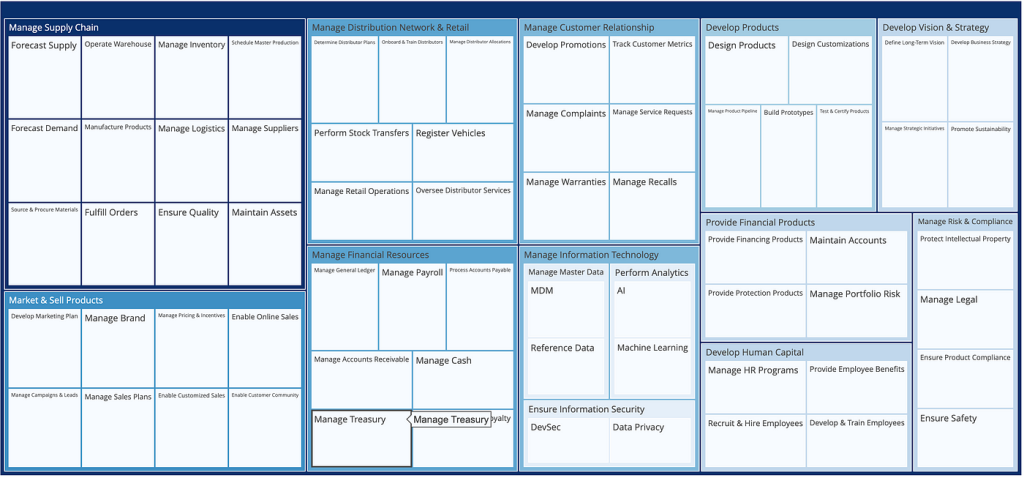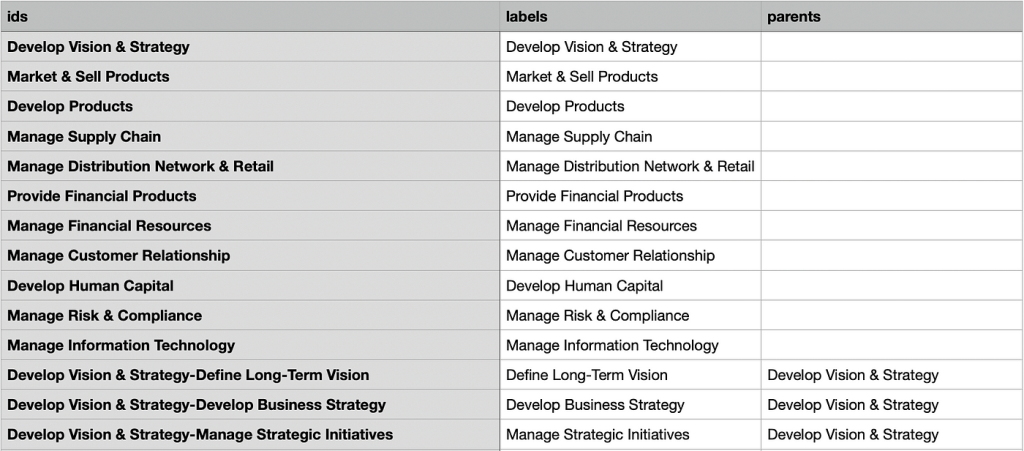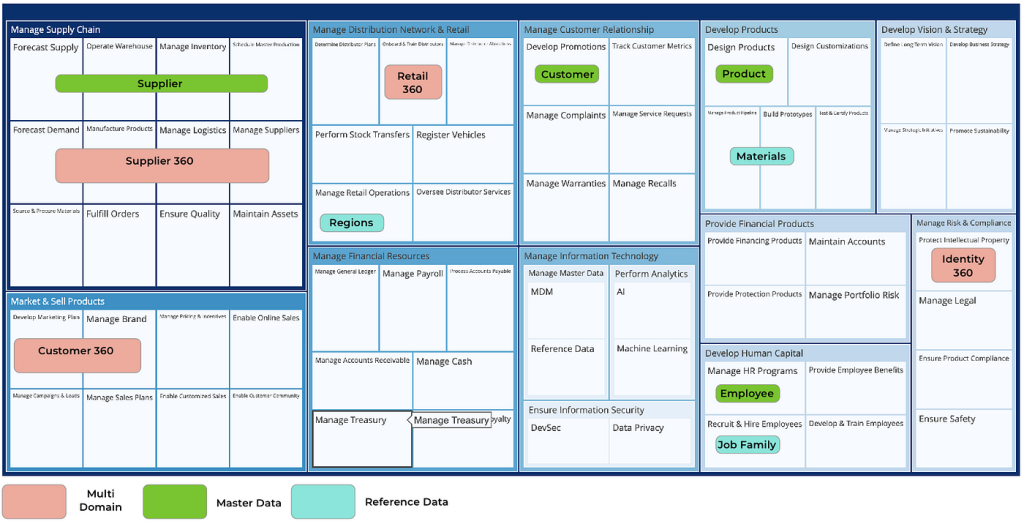In an earlier post, we outlined how Enterprise Stewardship requires real transformation and change management. A solid plan should also outline how a roadmap and supporting framework will help you get to the next generation of data management. Better data establishes a beach head for business-driven stewardship.
In a previous installment, we also made the case for the need for Enterprise Architecture practitioners to shift to an Enterprise Stewardship model. EAs and technologists must change their way of thinking in order to drive stewardship with business leaders. In an enterprise stewardship framework, this starts with the development of a business domain model.
Business domain modeling became archetypical in the late two-thousands as the technique surfaced in EA circles around 2009. They provide a simple way to visualize a given company’s functional operating model. A well developed business domain model can be highly effective in helping a company capture their business operating model in a way that is easily understood, and far more effective than a typical org chart. Domain models also resonate well with leadership, as they present a high-level view of the organization in a way that focuses on cross-functional business outcomes as opposed to siloed delivery.

Figure 1: Business Domain Model (courtesy of Data Visuals)
It’s easy to build a business domain model, and there are a number of ways to get started. White-boarding works for everything, and can be used as a starting point. General modeling tools like Visio and Lucidcharts work as well, but, for speed and sharing, you cannot go wrong starting with a simple spreadsheet. Before visualizing the model, you can readily build a data model using Google Sheets (or your favorite spreadsheet) as outlined in Figure 2.

Figure 2: Spreadsheets are a great place to start defining your BCM model.
If there is a challenge in building your first model, it will come from overlapping definitions of capability vs process. As with many mastering exercises, you’ll want to avoid going too deep when analyzing the structure. To illustrate this, let’s use Marketing. Most businesses have a marketing capability. In my example, we’ll call this a top level domain: Market & Sell Products. This top level is marked as Level 0. As we look deeper into the marketing function, we’ll identify a number of capabilities or sub-functions that make up the top level. One of those may be Manage Campaigns and Leads. This would be considered a Level 1 (one level under the top) domain, and so on.
Typically, 3 levels are more than sufficient to understand the business model. You may choose a zero or one based model (L0/L1/L2 vs L1/L2/L3), but limiting the depth to 3 levels will ensure that the model distinguishes between functions and process. While many companies have dozens to hundreds of functions, they also may potentially have tens of thousands of processes. The later are out of scope for a BCM exercise if you want to keep the attention of your leadership.Mapping data to the business domain model will be a key way to apply a broad set of data management techniques such as Master Data Management, Data Governance and Data Quality. It’s also an important first step to establishing stewardship. In this case, it helps to have a visualization of your BCM. Figure 3 depicts a manufacturing operating model broken into capabilities and is visualized with a Python library. Used as a canvas, the domain heat-map then gets fundamental MDM classifications (such as multi-domain, master and reference data entities) overlaid on the functional domain areas.

Figure 3: Multi-Domains and supporting Master and Reference data mapped to BCM
We subscribe to the philosophy that data best lives in the neighborhoods where it works. Systems of record that feed a Golden Record are best confirmed by the architects of the business, i.e., a Chief Marketing Officer or Head of Manufacturing. The leaders of your business, along with their teams are the best people to have at the table when mastering domains. Once you empower the functional business leaders in the data management lifecycle, you’ll spark a commitment for stewardship as this mastering technique helps executives and data managers understand where to begin when establishing stewardship boundaries, as well as any overlaps.
Business domain models support a broad number of executive management exercises, as well as data management practices. These examples hopefully illustrate how the use of business domain models help tell the story of data alignment with business functions. Taken to the next level, I’ve used this technique very successfully to ‘connect the dots’ for stakeholders.We’ll delve deeper into how to map applications and data flow, along with data lifecycle and transformation to the BCM in our next post. If you’d like to try some of this yourself, you’re free to download a Python based Business Domain Model visualization toolkit. You can get it free from our Github repo here. Enjoy!



